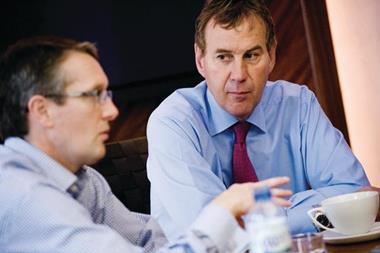To stay afloat in 2009, the broking giants must adapt to a changing marketplace
The consolidator model is under greater pressure than ever before. Insurers that encouraged the growth of these broking beasts with generous remuneration are turning off the tap.
At the same time, the cost and availability of acquisition finance is being squeezed by the financial turmoil. The consolidators must adapt.
At its heart the consolidator model is simple: using scale to leverage better remuneration from insurer partners, while growing through acquisition.
In recent years, the insurers offered the consolidators such as Towergate, Jelf Group and Giles Insurance generous commission and improved service because of the volume of business they could produce. Meanwhile, the consolidators aggressively bought brokers, fuelled by the availability of finance. They grew in power and demanded ever higher commissions, something insurers found difficult to resist.
The picture has changed. Insurers faced with spiralling expenses and falling underwriting profits are resisting the consolidators’ demands, warning that commissions have become unsustainably high – although remuneration terms seem not to have been cut so far. Indeed, Norwich Union has been actively looking to support independent brokers through its Club 110 initiative and senior insurance executives say the consolidators are now accepting deals that would have been unacceptable six months ago. The rising cost of finance has added to the pressure.
Consolidators will need to respond to these challenges. At the heart of the issue is the question of the value they add to the distribution equation. Does the underwriting performance of the business produced justify the commissions charged?
Risk selection will be critical. If the loss ratios on consolidator-produced business are poor, the firms cannot hope to command top-notch remuneration.
Efficiency is also vital. One of the perceived benefits for insurers is that the average cost of servicing consolidators is lower than if the business had come from a large number of producers. The extent of this cost reduction depends on how the consolidator integrates its acquired businesses, such as harmonising software platforms or centralising risk placement.
The consolidators will also need to examine their own cost bases. Integration and cost reduction – areas that some companies have focused less on – will be essential. A model that simply bolts on acquired businesses without any significant attempt to integrate them into an organised, efficient structure will be unsustainable.
Organic growth must also receive greater focus. The number of acquisitions is expected to slow this year and consolidators must place more emphasis on new business and cross-selling extra products to boost revenues. They will need to invest in staff and infrastructure. There will be some acquisitions (of high quality targets) but the pace of deals will be markedly slower than in 2008.
The business case for two consolidators merging is questionable in the current environment. Insurers will not be willing to offer higher commission levels to the merged business, so the benefit must come from cost savings. Making such a deal work would be a massive challenge and the entrepreneurs who run the consolidators are unlikely to have the stomach for such a protracted project (putting aside the inevitable clash of egos that a merger would entail).
michael.faulkner@instimes.co.uk
Key points
• Insurers will take a closer look at the value of deals with consolidators
• Consolidators must look at the quality of business provided to insurers
• Insurers will look at their costs of servicing consolidator-produced business
• Integration of acquisitions and organic growth will be a focus in 2009
• The business case for the merger of two consolidators is questionable



































